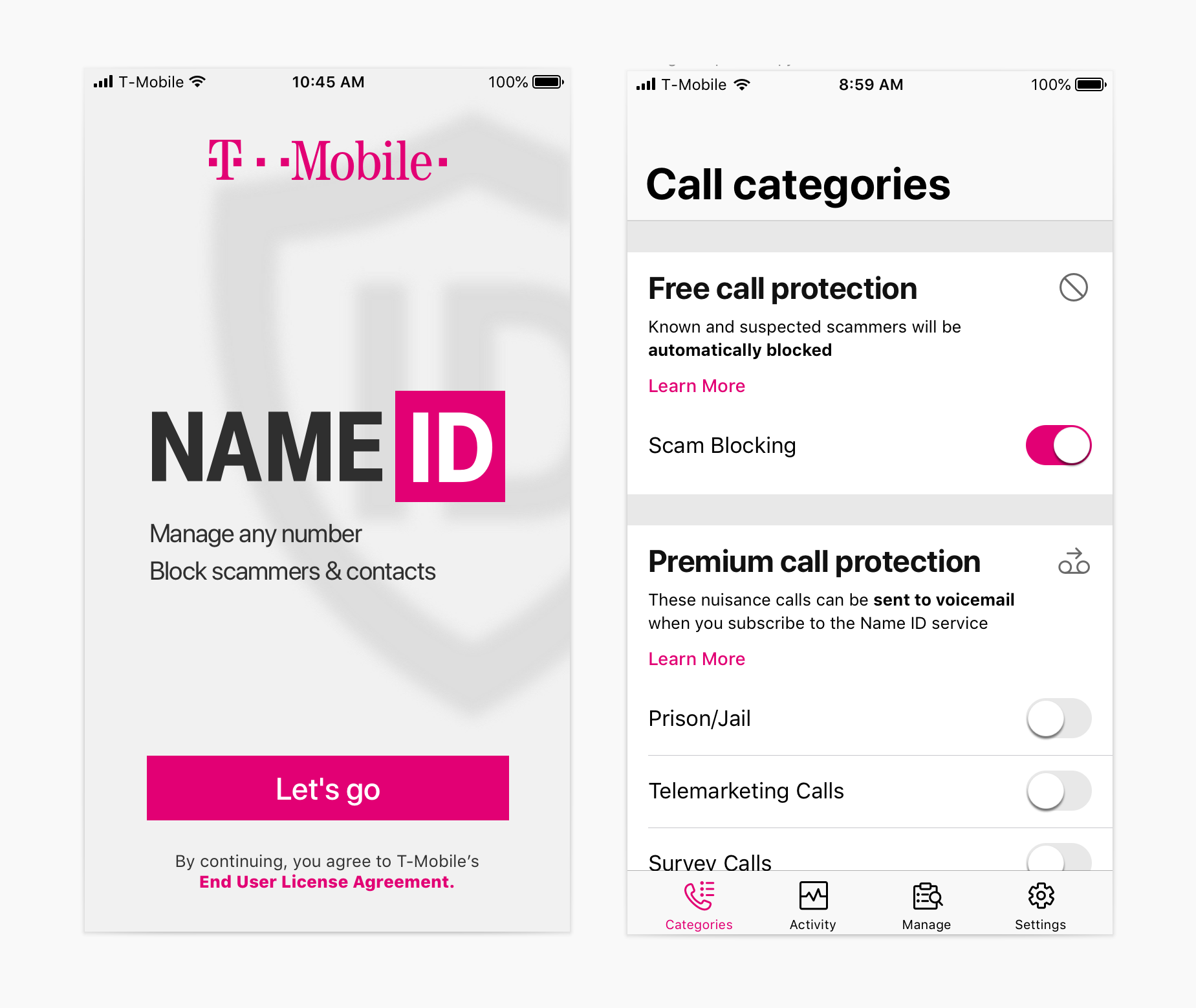
Project Directive
After a vacancy on the UX Team put NameID’s public release timeline in jeopardy, I was brought onboard to get things back on track. Working through considerable design debt, I quickly took charge of the stagnating design process, creating a plan which would quickly align product stakeholders in the Marketing, Legal, and Brand organizations and creating the needed momentum to meet the promised launch deadline while delivering a product that would go on to deliver unparalleled security and protection to millions of T-Mobile customers.
My Design Process
- I hit the ground running, quickly assessing the existing design debt with the goal of turning around a stagnant and disorganized design effort that lacked documentation and rationale behind many key UX decisions.
- Working with key stakeholders, I created an expedited design delivery plan, clearly outlining the goals and requirements that the stakeholders in Product Marketing, Engineering, Brand, and Legal needed to align on. Guiding the discordant group of stakeholders into alignment, I built a coalition among the groups and cleared a path toward a successful launch.
- Designed a series of “Hero Screens” to efficiently to demonstrate the revised new UX and revised Visual Design to stakeholders, with the goal of getting provisional sign off in order to move forward with my expedited design plan.
- I created interactive prototypes demonstrating key functionality like Incoming Scam Call display, retroactive call classification, submitting misidentified scam calls to our review team, and altering call disposition from state to state to better convey these UX improvements to stakeholders in an interactive, native-feeling experience.
- After garnering approvals from all stakeholders based on these Hero screens and prototypes, I put my head down and built out all production screens for our iOS client and created extensive UX documentation.
- I managed a junior designer whose task was taking my iOS designs and refactoring them in order to align more closely with Google’s Material Design language. The intent was to ensure functional commonalities remain the same but the UI and interactions leverage native Android paradigms to provide a more natural, tailored, and seamless experience for Android users.
- I created a Visual Styleguide, wrote extensive UX documentation, and prepared a production ready handoff package including all design assets for both iOS and Android for our development partner, managing that handoff process and ensuring their development team had everything they needed to successfully execute on the designs within the tight window leading up to release.
- Coordinated and participated in an internal Friendly User Test (FUT) in order to validate UX decisions and worked with our development partner’s QA and development teams to solve any launch gating UX issues on the run up to launch.
- Post-launch I worked closely with our Product Marketing team and development partner to review the launch analytics and plan for future enhancements to NameID.
Small App, Big Customer Impact
NameID’s initial launch in 2018 was met with immediate success: within 6 months, over 3 billion Scam calls had been identified and blocked for millions of NameID customers. Within a year NameID’s compelling functionality was bringing in tens of millions of revenue to T-Mobile while offering measurable quality of life improvements for every single T-Mobile customer.
Post Launch Rebrand
As NameID garnered industry accolades, C-suite executives took notice. In 2019 a rebranding effort was begun in order to better align the product name with its purpose and impact for our customers resulting in Scam Shield. The new Scam Shield was unveiled in 2020 by CEO Mike Sievert as the spearhead of a nationally publicized Uncarrier Move.
In 2021 alone, Scam Shield identified or blocked over 21 billion Scam calls (3.5x more blocked calls than AT&T’s similar offering), providing an unparalleled level of protection for T-Mobile customers amidst a burgeoning wave of fraud and phone scams, estimated to be costing Americans nearly $30 billion in 2021 alone.
Work Samples
First Run Experience:

Showing the First Run experience and automated login process. Disabling your WiFi for login was an unfortunate requirement for login to allow for the network to properly verify your account. This was created as a clickable, interactive experience and demonstrated to product stakeholders. The prototype itself was made available to key stakeholders for them to experience natively on their devices, allowing for much more pertinent feedback than typical wall walks and static screen slideshows generally garners.
Basic In-App Functionality:
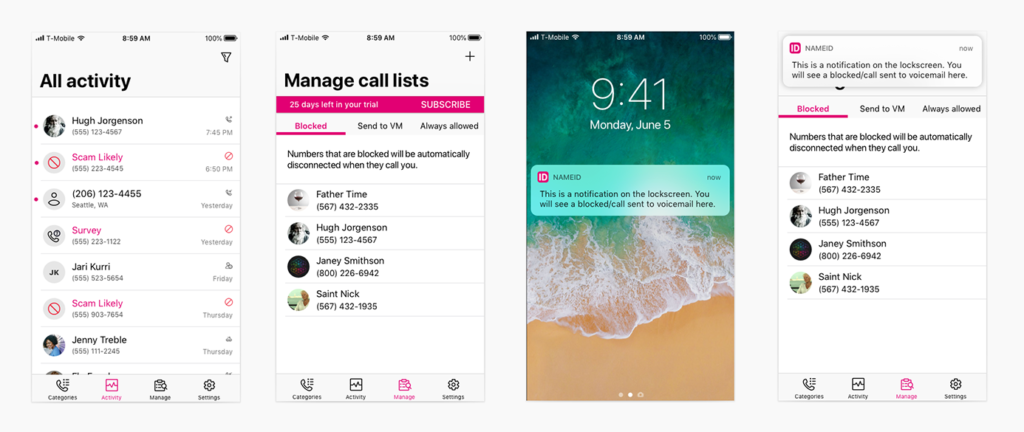
This series shows examples of NameID’s call history log, showing, notifications to inform the user if NameID has blocked a call or routed a call to your voicemail, and personal block list functionality allowing for network side blocking of any contact or phone number.
Miscellaneous Screens
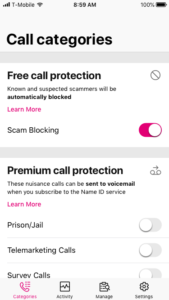
Settings menu to activate Free and Premium features.
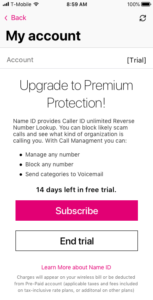
Screen explaining the value of the Premium NameID subscription.
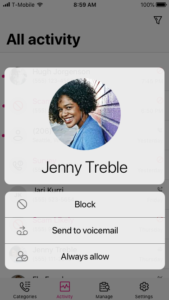
Screen showing quick call routing options for incoming call from a identified contact.